Blancpain
The Beauty of Bespoke Blancpain
Blancpain
The Beauty of Bespoke Blancpain
There are two sites for Blancpain’s production, both of which are nestled in the unspoiled landscape of the Vallée de Joux. The first site is in Le Sentier, where the company creates the components for its movements, carries out the assembly of its calibers and cases the final watch. The second site is situated in an old flour mill, just down the road in Le Brassus. It is here that we find the brand’s high complication workshops and its métiers d’art studio.
A Little History Behind a Big Brand
But before we step inside, a little history about the Blancpain company that has been operating since 1735, making it the world’s oldest watchmaking brand. Blancpain was started by Jehan-Jacques Blancpain in a small workshop on the upper floor of his house in Villeret. The brand’s watches enjoyed great success right from those early days, a success that was continued by the founder’s heirs. By the middle of the 19th century, Blancpain had become one of the most important enterprises in Villeret.
On the death of Frédéric-Emile Blancpain in 1932, his only daughter didn’t want to take over the business and it was sold to two loyal members of staff – Betty Fiechter and André Léal. Fiechter was at the head of the company until 1950 when her nephew, Jean-Jacques Fiechter, joined her and later became CEO himself.

Betty Fiechter

Marc A. Hayek
Horology and Art
Today, Blancpain is probably best known for its sports watches thanks to its links to the worlds of diving and motorsports. Timepieces such as the Blancpain Fifty Fathoms Collection and the Villeret Collection have graced the pages of Revolution countless times. But there is a very small part of its production dedicated to the métiers d’art that remains largely in the shadows. The reason for this is twofold. Firstly, the numbers of these hand-crafted words of art are extremely limited, and secondly, many of them are bespoke orders from the brand’s clients and are mostly kept secret from the press.
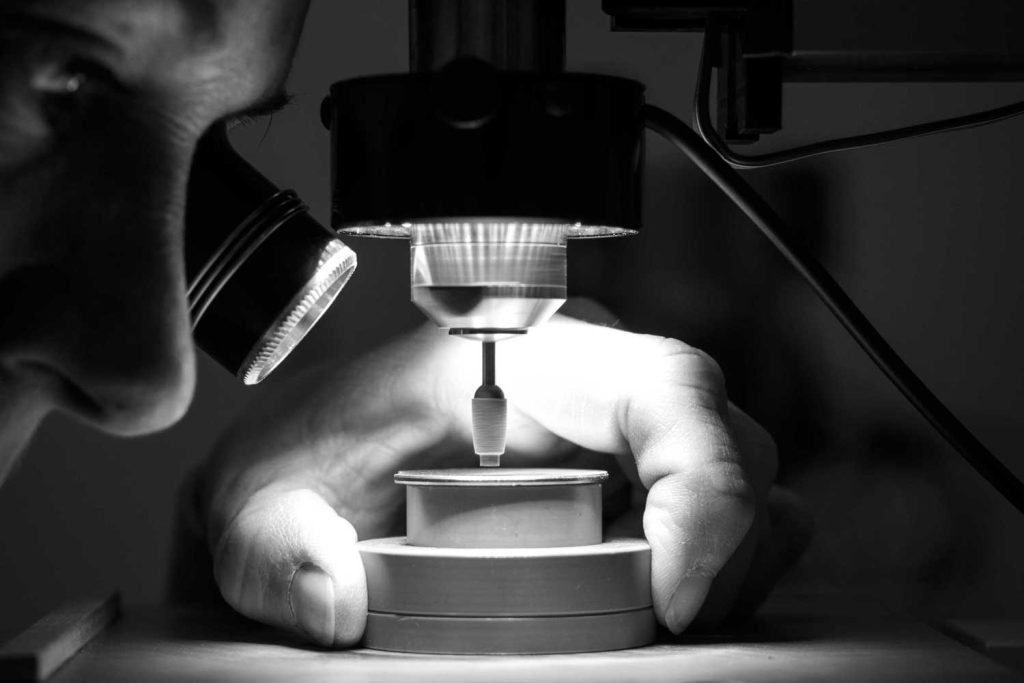
A closer look at Blancpain’s perlage
There are different ways to personalize your watch chez Blancpain. You can adapt the gold winding rotor, you can personalize the side of the movement visible through the sapphire crystal caseback, or you can design your very own dial using one of the artistic techniques mastered by Blancpain’s team of artisans. Let’s take a closer look.
Decorative Arts
Entering Blancpain’s métiers d’art studio, we meet two engravers busy at work engraving dials with the aid of a state-of-the-art microscope on the one hand, and their own traditional engraving tools called burins, on the other. These types of tools have been in use since Roman times when engravers would carve the portraits of their emperor onto coins. One of the engravers shares with us that her tools first belonged to her grandfather and are almost a century old.
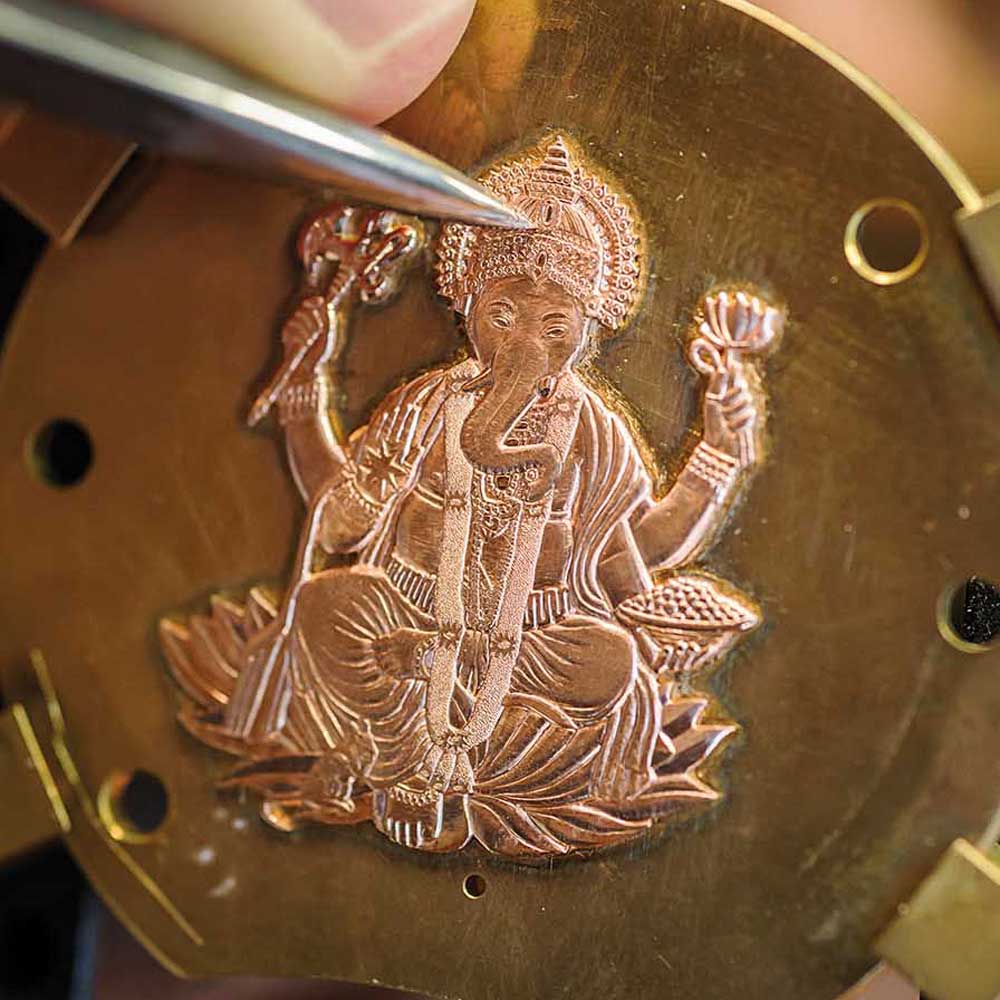
Engraving
Enameling
Miniature enamel painting is one of the most noble of the decorative arts, dating back to the 1500s. Originally flourishing as a means by which the nobility captured the likeness of a person for official or personal purposes, the craft migrated to watchmaking a century later.
Blancpain uses the same techniques employed by artisans all those centuries ago. The process starts with a solid gold dial to which the artisan will apply several layers of enamel to create a base. They also enamel the back side of the dial to avoid distortion of the metal. Each layer must be individually fired in a kiln at temperatures around 800°C. The resulting enamel surface is then meticulously polished to produce a perfect canvas on which the artisan can start miniature painting.
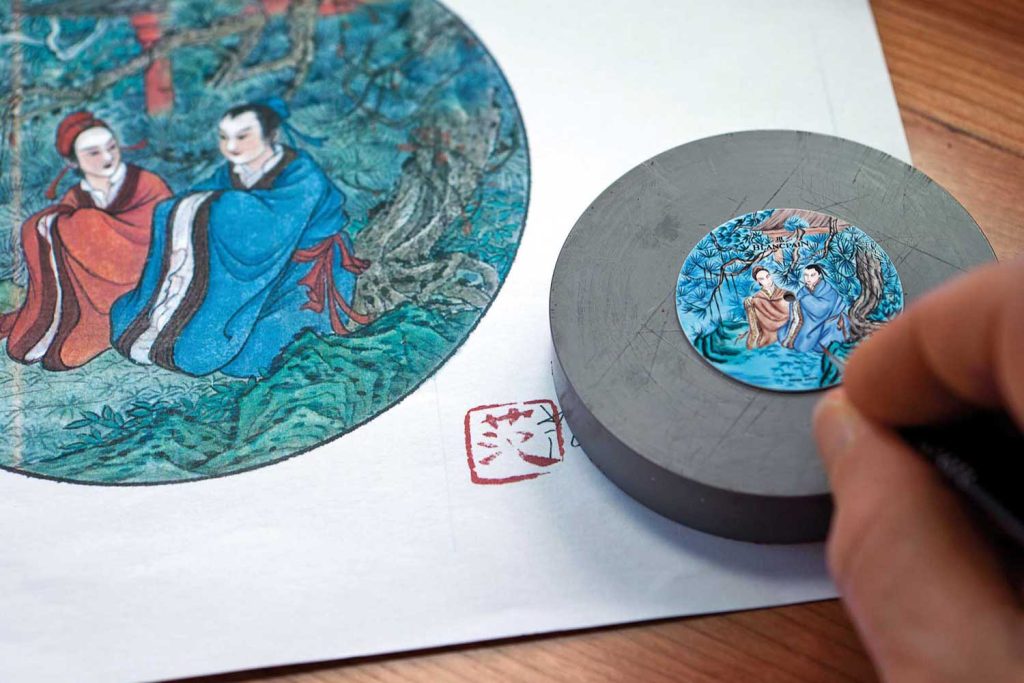
Enameling
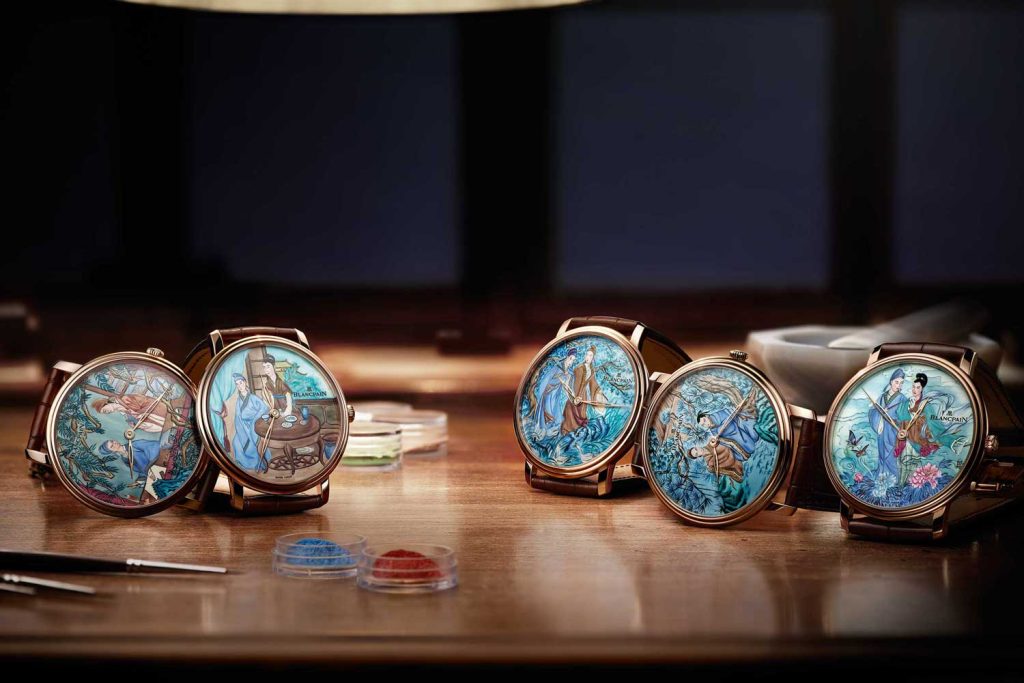
Blancpain Villeret Manuelle Piece Unique pieces with enamel dials
Shakudō
This ancient Japanese art form lends itself perfectly to horology. It was originally developed to embellish Samurai swords by transforming the color of a gold/copper alloy from its natural hues of yellow, orange and brown to a subtle nuanced black/gray.
The process is achieved by submerging the dial or component in a warm chemical bath called a Rokusho which transforms the color of the alloy itself, in comparison to electroplating which adds matter to the surface. A lot of trial and error is needed to get the right color. The surface can then be brushed to bring additional texture if desired. Shakudo is often coupled with other decorative techniques such as engraving, damascening and carving.
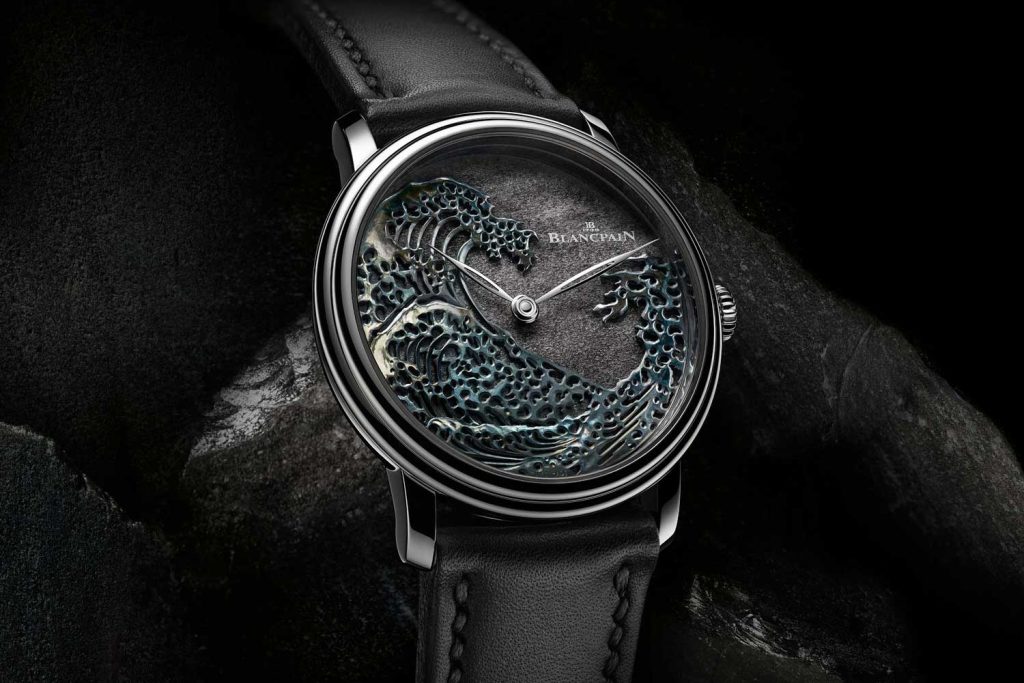
Blancpain Métiers d'Art ‘The Great Wave’ with Shakudō dial
Binchōtan
Binchtan also originates from Japan. The process begins with a type of Oak called ubamegashi that is heated in a clay oven to temperatures ranging between 1,000°C and 1,300°C, transforming the wood to charcoal. Discs are then finely sliced and attached to a substrate, thus creating a unique jet-black textured dial surface. The dials can then be covered with urushi lacquer to give them a shiny surface. Red lacquer or lacquer mixed with gold powder are also used to paint patterns on the Binchtan. Blancpain is the only watchmaker using the Binchotan technique.
Damascening
Originally from China, before spreading to ancient Damascus (where the name comes from), Persia, India and Spain, this exotic technique is mastered by Blancpain’s master craftsmen and women, making it the first watch maison to offer this technique.
The art started with bronze objects in the 16th century B.C. and the process remains largely unchanged. The surface is first carved with the design to form troughs. Threads of soft metal, almost always gold or silver, are then hammered into the troughs and the top surface is polished flat. The key principle is that the precious metal decoration is held in place by the surface of the harder metal into which it has been inserted and hammered.

Cloud swirls of precious metal are hammered into place around an engraved dragon
Personalization Process
Many of the timepieces created in Blancpain’s métiers d’art studio are for private clients who are seeking something completely unique. Prices start at around $5,000-$6,000 for a personalized rotor, which is an outstanding value when you consider you have your very own personalized wristwatch. But as some people just can’t wait, Blancpain also creates a small collection of métiers d’art timepieces each year, choosing scenes that are close to its heart.
Last year the brand chose scenes from traditional Swiss life with cows fighting and a group of men flag throwing in the mountains. These timepieces also have the advantage of not being top secret so the outside world can get a glimpse of the incredible masterpieces Blancpain is creating up in La Vallée de Joux, because they really do deserve to be seen.
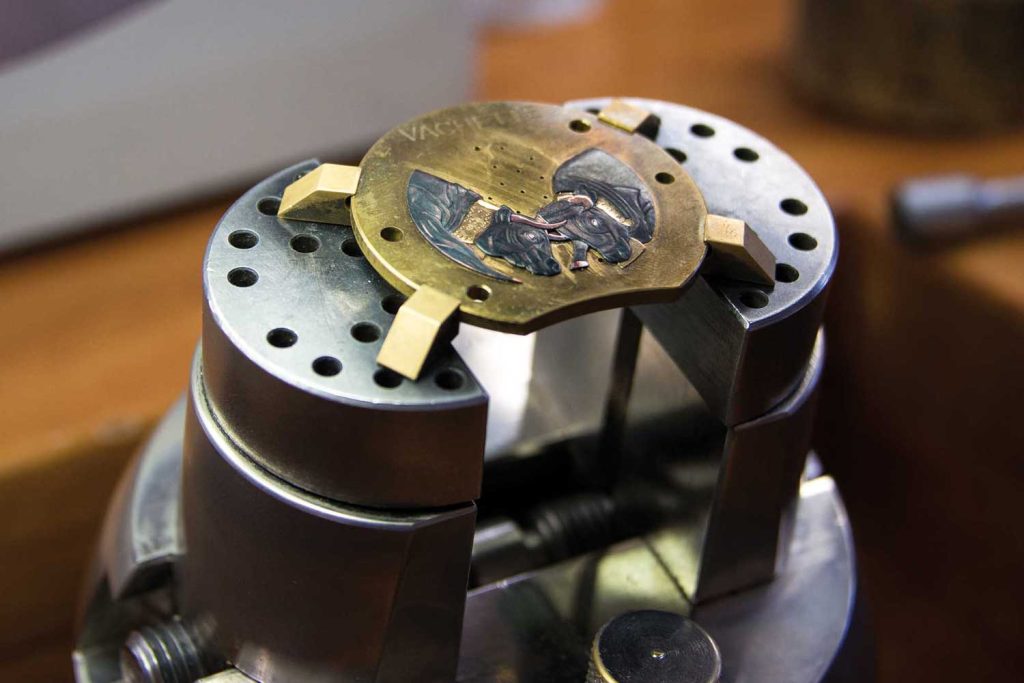
The making of the Blancpain Métiers d'Art Shakudo ‘Battle of the Queen Cows’
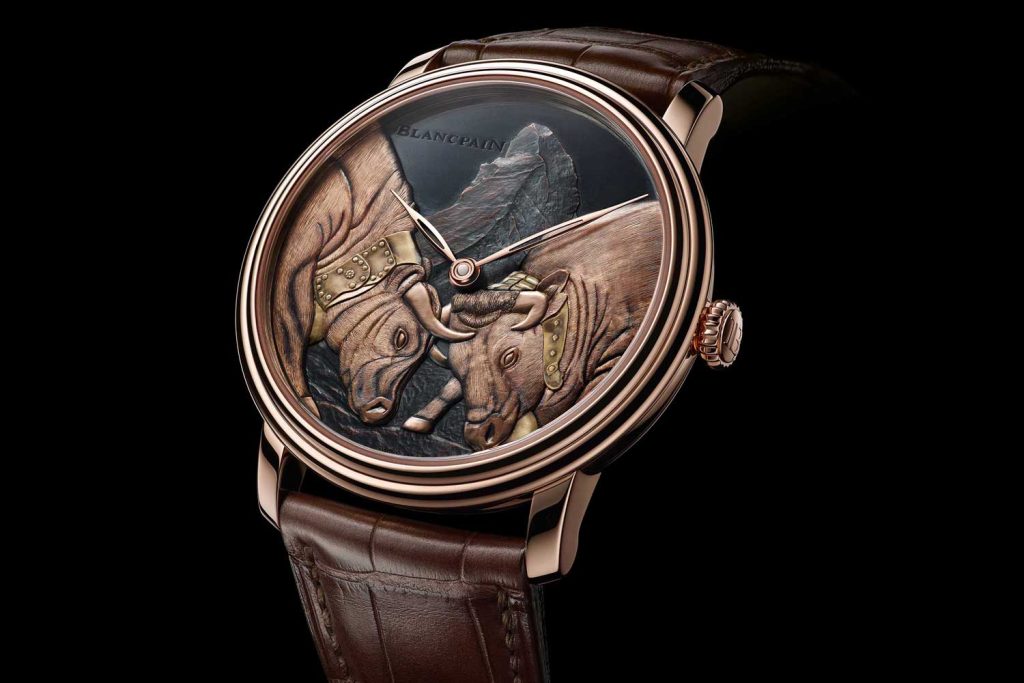
Blancpain Métiers d'Art Shakudo ‘Battle of the Queen Cows’










